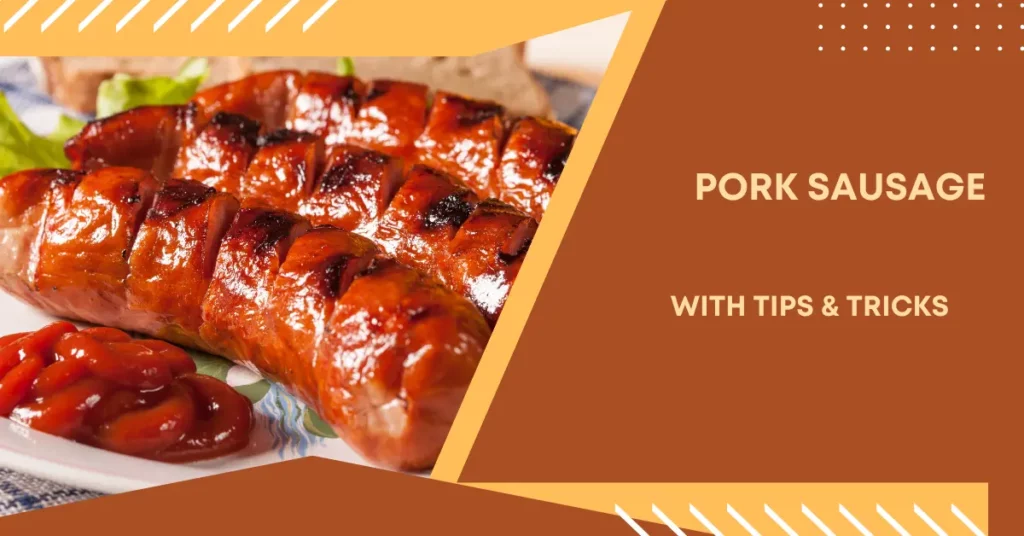This post may contain affiliate links. If you use these links to buy something we may earn a small commission. Thanks.
Sausage making is an art that requires the right balance of meat, fat, and seasoning. Whether you’re making breakfast sausage, bratwurst, or Italian sausage, getting the pork-to-fat ratio right is the key to achieving the perfect texture and flavor. Too much fat, and the sausage becomes greasy; too little, and it turns dry and crumbly. In this guide, we’ll break down the best ratios for pork sausage, the ideal cuts to use, and how to grind, mix, and cook sausage like a pro.
Why Meat-to-Fat Ratio Matters in Sausage Making
When making pork sausage, the meat-to-fat ratio determines the juiciness, flavor, and texture. Fat is essential because it:
- Enhances flavor – Fat carries and intensifies flavors.
- Adds moisture – Prevents the sausage from becoming too dry after cooking.
- Improves texture – Creates a smooth, cohesive bite rather than a tough, rubbery one.
A well-balanced sausage contains enough fat to keep it moist, juicy, and flavorful, without feeling excessively greasy.

Best Pork-to-Fat Ratios for Sausage
There’s no one-size-fits-all ratio, but here are the most commonly used ones:
1. 80/20 (80% lean meat, 20% fat) – The Standard Ratio
This is the most widely used ratio in homemade and commercial sausage making. It delivers the perfect balance of flavor, moisture, and texture. If you’re unsure which ratio to choose, 80/20 is the safest bet.
Best for:
- Breakfast sausages
- Mild-flavored sausages
- Italian sausage
2. 70/30 (70% lean meat, 30% fat) – For Extra Juiciness
If you want a richer, juicier sausage, a 70/30 ratio works best. This is ideal for sausages that will be smoked or grilled, as they tend to dry out more during cooking.
Best for:
- Smoked sausages (e.g., Andouille, Kielbasa)
- Bratwurst
- Sausages for grilling
3. 85/15 (85% lean meat, 15% fat) – A Leaner Option
For those who prefer leaner sausages, an 85/15 ratio provides a healthier alternative. However, it may lack moisture, so you can add ingredients like broth, milk, or finely ground bacon to compensate.
Best for:
- Health-conscious sausage makers
- Fresh breakfast sausages
- Sausages mixed with vegetables
4. Customizing Your Own Ratio
You can adjust the ratio based on personal preference. If you’re making a very fatty sausage (like chorizo), you might go 60/40 (lean-to-fat). If you prefer a leaner bite, an 85/15 ratio can work with added moisture.
Best Pork Cuts for Sausage Making
Selecting the right pork cut ensures your sausage has the correct amount of fat. Here are the best cuts to use:
1. Pork Shoulder (Boston Butt) – The Ideal Cut
Pork shoulder naturally contains a perfect 70/30 fat ratio, making it the best all-in-one cut for sausage making. It has enough fat to stay juicy but not so much that it becomes greasy.
2. Pork Belly – For Extra Fat
If your meat is too lean, adding pork belly helps balance the fat content. This is ideal if you’re using leaner cuts like pork loin but still need some fat.
3. Pork Loin or Tenderloin – Leaner Choice
Pork loin is very lean (around 90/10 lean-to-fat ratio), so it’s not ideal for sausage unless combined with pork fat trimmings or belly. If you want a leaner sausage, using pork loin and adding extra fat can work.
4. Pork Fat Trimmings – For Adjusting Fat Content
If your pork cut is too lean, you can ask your butcher for pork fat trimmings to bring up the fat percentage. This is a great way to tweak your ratio to achieve perfect consistency.
Essential Seasonings for Sausage
Once you have the right meat-to-fat ratio, seasoning makes all the difference. Here are the must-have seasonings for different types of sausage:
Basic Seasonings (Good for Any Sausage)
- Salt – Enhances flavor and helps with protein binding.
- Black Pepper – Adds a mild spice and aroma.
Common Herbs & Spices for Different Sausages
- Fennel Seeds & Sage – For breakfast sausage
- Paprika & Red Pepper Flakes – For spicy Italian sausage
- Garlic & Onion Powder – Adds depth to any sausage
- Curing Salt (Prague Powder #1) – For smoked sausages (prevents spoilage)
Grinding and Mixing Your Sausage
Step 1: Grinding the Meat and Fat
- Use a coarse grind first (3/8-inch plate).
- For a smoother sausage, grind again using a finer plate (1/4-inch).
- Always grind meat and fat together to ensure even distribution.
Step 2: Mixing the Sausage
- Add seasonings and mix thoroughly.
- Knead the mixture until it sticks together in a sticky mass (this ensures proper binding).
- Chill the mixture for at least 1 hour before stuffing.
Cooking and Storage Tips
Cooking Your Sausage
- Test a small batch first – Cook a small patty to taste before stuffing.
- Avoid overcooking – Cook sausages to 160°F (71°C) for pork.
- Use indirect heat for grilling – Prevents burning the outside while the inside cooks.
Storage Tips
- Refrigerate fresh sausage for up to 2 days before cooking.
- Freeze uncooked sausage for up to 3 months (vacuum-sealing helps preserve freshness).
Final Thoughts: Choosing the Best Pork Sausage Ratio
The right meat-to-fat ratio makes all the difference in homemade sausage. For most cases, an 80/20 ratio is ideal, but if you prefer a juicier sausage, go for 70/30. Leaner sausages work at 85/15, but they may require moisture adjustments.
By selecting the right pork cuts, grinding properly, and seasoning well, you can create delicious homemade sausages that rival any store-bought version. So, get your meat grinder ready, experiment with flavors, and start making perfect pork sausage at home.
